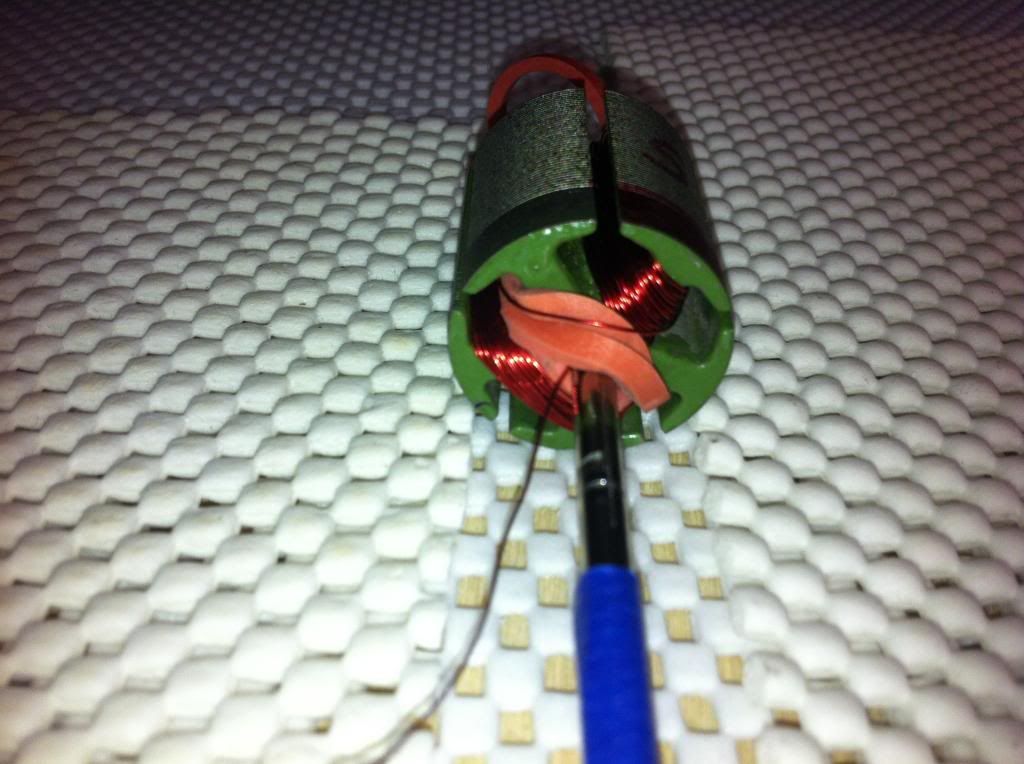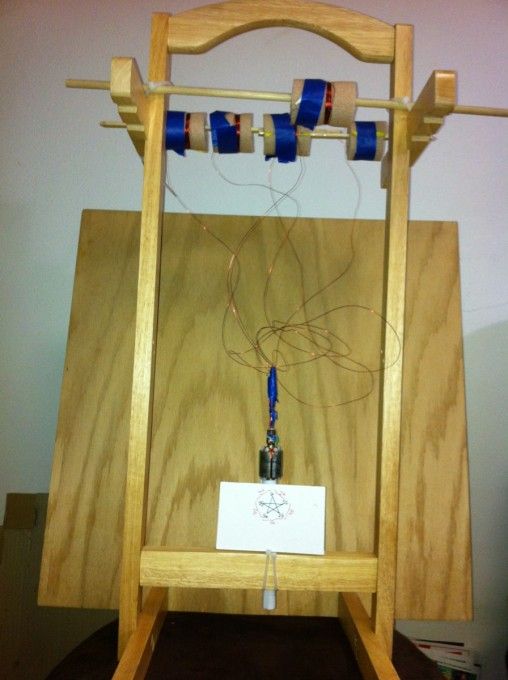Rebuild complete
Evening All.
So. We have been busy playing with our new toy...my testing assistant (daughter) was very eager to further science by trying out the scooter (un-modified). She loves it, and I'm extremely surprised at its abilities.
Living in Scotland, there is not much that is flat so it got some real 'terrain' as they describe it in the manual. Now depending on terrain it can do 20km (12miles) between charges. We did 4 mile journey today up some hills I didn't think it would even touch. But 4 miles was pretty much it. It still could handle flat bits but slopes were now beyond its reach. Recharge was 6 hours, so not completely flat which would be 8 hours.
The new motor is wound with 0.425mm 0.121 ohm/m.
12 groups
3 coils per group
3 poles 12 winds per coil
By application of math, the resistance for one group should be in the region of 1.2 - 1.4 ohm...but my meter was reading 0.012...so I think I need to figure out my meter !!
The benchmark 5v test -
5.39v no load
5.11v load (v in)
3.95v out rising to 4.0v out
1175 rpm rising to 1190 rpm
0.73A @ 945 rpm (again as before the revs drop when I do the amp reading...I have no explanation for anomalies like this)
The PSU has a rated 12v output but this checked at 10.35v
10.35v no load
10.24v load (v in)
8.75v out rising to 8.9v out
2619 rpm rising to 2670 rpm
0.84A @ 2200 rpm (why does the meter drop the speed down ?)
The torque in both tests were stronger than the original motor but less than my original build which threw a wire at 5600 rpm.
Also the motor ran a lot smoother than the 'beast'.
Still waiting for my longer bolts to clamp the end plates at which point I intend to weld the two bodies together to complete the build.
Happy hunting
mark
Evening All.
So. We have been busy playing with our new toy...my testing assistant (daughter) was very eager to further science by trying out the scooter (un-modified). She loves it, and I'm extremely surprised at its abilities.
Living in Scotland, there is not much that is flat so it got some real 'terrain' as they describe it in the manual. Now depending on terrain it can do 20km (12miles) between charges. We did 4 mile journey today up some hills I didn't think it would even touch. But 4 miles was pretty much it. It still could handle flat bits but slopes were now beyond its reach. Recharge was 6 hours, so not completely flat which would be 8 hours.
The new motor is wound with 0.425mm 0.121 ohm/m.
12 groups
3 coils per group
3 poles 12 winds per coil
By application of math, the resistance for one group should be in the region of 1.2 - 1.4 ohm...but my meter was reading 0.012...so I think I need to figure out my meter !!
The benchmark 5v test -
5.39v no load
5.11v load (v in)
3.95v out rising to 4.0v out
1175 rpm rising to 1190 rpm
0.73A @ 945 rpm (again as before the revs drop when I do the amp reading...I have no explanation for anomalies like this)
The PSU has a rated 12v output but this checked at 10.35v
10.35v no load
10.24v load (v in)
8.75v out rising to 8.9v out
2619 rpm rising to 2670 rpm
0.84A @ 2200 rpm (why does the meter drop the speed down ?)
The torque in both tests were stronger than the original motor but less than my original build which threw a wire at 5600 rpm.
Also the motor ran a lot smoother than the 'beast'.
Still waiting for my longer bolts to clamp the end plates at which point I intend to weld the two bodies together to complete the build.
Happy hunting
mark





Comment